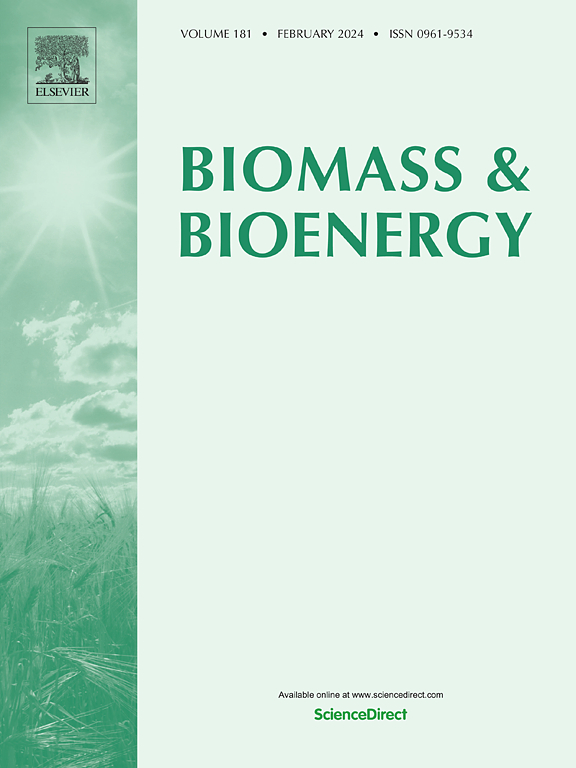基于神经网络和随机森林的生物质热解油含氧组分含量预测模型研究
IF 5.8
2区 生物学
Q1 AGRICULTURAL ENGINEERING
引用次数: 0
摘要
生物质热解油作为一种可再生能源,具有重要的应用价值,其含氧组分的含量是影响其性能和利用方法的关键参数。本研究利用神经网络和随机森林两种机器学习方法对生物质热解油中含氧组分含量进行预测。收集了大量生物质热解油样品数据,并对其含氧成分含量进行了分析。利用神经网络和随机森林技术进行模型训练和验证,将数据集分为训练集和测试集(90%)和测试集(10%)。实验结果表明,两种算法均能准确预测生物质热解油中含氧组分含量(R2 >;0.81, RMSE <3.46)。并对模型的性能进行了评价和对比,为预测生物质热解油中含氧组分含量提供了有效的方法和参考。本文章由计算机程序翻译,如有差异,请以英文原文为准。
Study on prediction models of oxygenated components content in biomass pyrolysis oil based on neural networks and random forests
Biomass pyrolysis oil, as a renewable energy source, has significant application value, with the content of its oxygenated components being a critical parameter affecting its properties and utilization methods. This study investigates the prediction of oxygenated component content in biomass pyrolysis oil using two machine learning methods: neural networks and random forests. A large dataset of biomass pyrolysis oil samples was collected and analyzed for their oxygenated component content. Neural network and random forest techniques were used for model training and validation, and the dataset was split into training and testing sets (90 %) and (10 %), respectively. The experimental results indicate that both algorithms can accurately predict the oxygenated component content in biomass pyrolysis oil (R2 > 0.81, RMSE <3.46). Additionally, the models' performance was assessed and contrasted, providing effective methods and references for predicting the oxygenated component content in biomass pyrolysis oil.
求助全文
通过发布文献求助,成功后即可免费获取论文全文。
去求助
来源期刊

Biomass & Bioenergy
工程技术-能源与燃料
CiteScore
11.50
自引率
3.30%
发文量
258
审稿时长
60 days
期刊介绍:
Biomass & Bioenergy is an international journal publishing original research papers and short communications, review articles and case studies on biological resources, chemical and biological processes, and biomass products for new renewable sources of energy and materials.
The scope of the journal extends to the environmental, management and economic aspects of biomass and bioenergy.
Key areas covered by the journal:
• Biomass: sources, energy crop production processes, genetic improvements, composition. Please note that research on these biomass subjects must be linked directly to bioenergy generation.
• Biological Residues: residues/rests from agricultural production, forestry and plantations (palm, sugar etc), processing industries, and municipal sources (MSW). Papers on the use of biomass residues through innovative processes/technological novelty and/or consideration of feedstock/system sustainability (or unsustainability) are welcomed. However waste treatment processes and pollution control or mitigation which are only tangentially related to bioenergy are not in the scope of the journal, as they are more suited to publications in the environmental arena. Papers that describe conventional waste streams (ie well described in existing literature) that do not empirically address ''new'' added value from the process are not suitable for submission to the journal.
• Bioenergy Processes: fermentations, thermochemical conversions, liquid and gaseous fuels, and petrochemical substitutes
• Bioenergy Utilization: direct combustion, gasification, electricity production, chemical processes, and by-product remediation
• Biomass and the Environment: carbon cycle, the net energy efficiency of bioenergy systems, assessment of sustainability, and biodiversity issues.
 求助内容:
求助内容: 应助结果提醒方式:
应助结果提醒方式:


